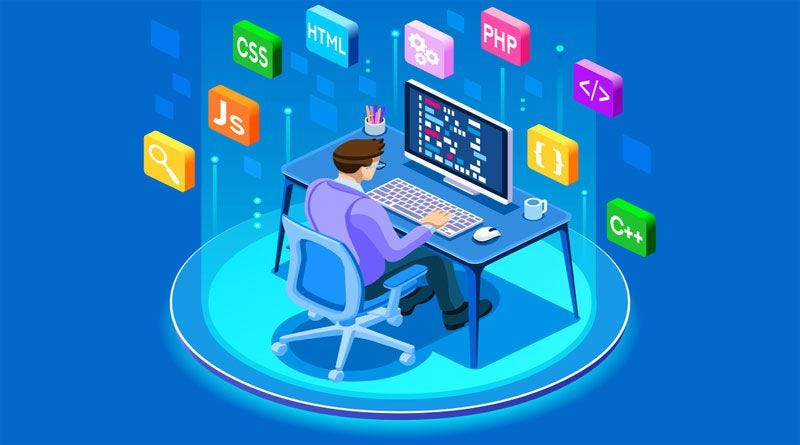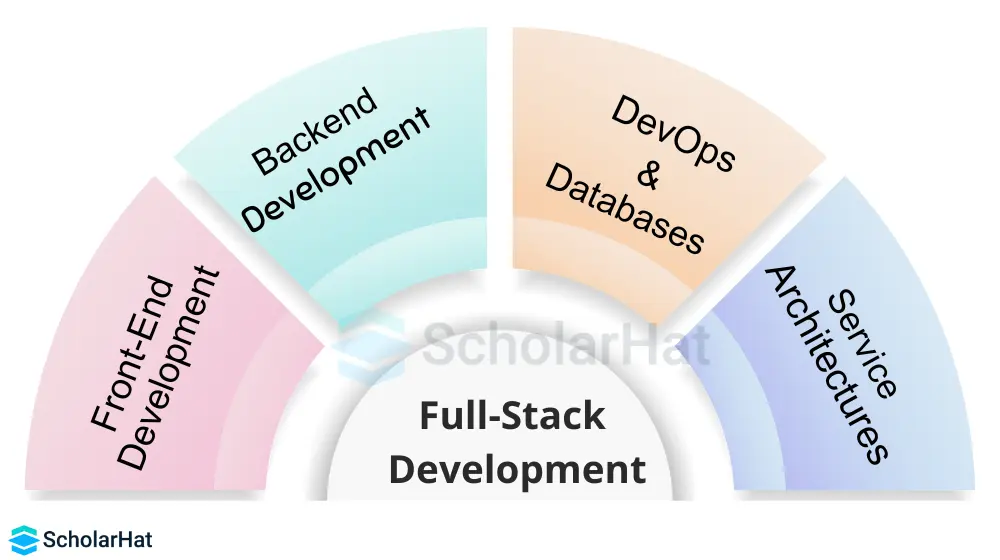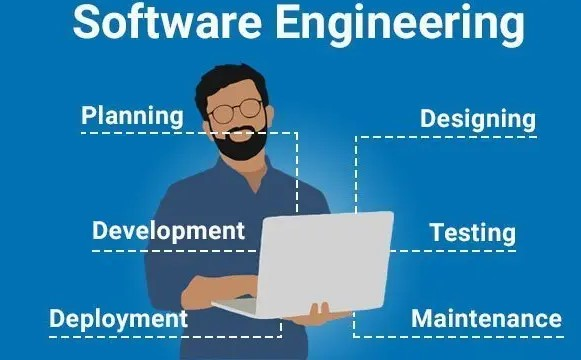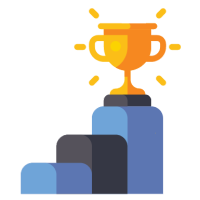25
AprFull Stack Developer Vs. Software Engineer
Confused between becoming a Full Stack Developer or a Software Engineer? You're not alone! These two roles often get mixed up, and while they both live in the world of code, their responsibilities and skill sets aren’t exactly the same.
The debate between Full Stack Developers vs Software Engineer is a common one in the tech industry. As technology evolves, the lines between various tech roles often blur, making it essential to understand the unique responsibilities, skills, and career opportunities each role offers. This Career Tutorial will help clear things up with no jargon, just real talk. Let’s dive in and figure out which role might be the right fit for you!
Key Differences Between Full Stack Developers and Software Engineers
The terms "Full Stack Developer" and "Software Engineer" are sometimes used interchangeably, but they refer to distinct roles with specific focuses. Here's a comparison table for better clarity:
| Feature/Aspect | Full Stack Developer | Software Engineer |
| Focus Area | Front-end and back-end web development | Designing, building, and maintaining software systems |
| Project Scope | End-to-end web application development | Broader software development (web, system, embedded) |
| Key Technologies | HTML, CSS, JavaScript, Node.js, React, MongoDB, etc. | Varies – includes Java, C++, Python, databases, etc. |
| Roles and Responsibilities | Covers both UI/UX and server-side development | Involves software design, architecture, and coding |
| Team Collaboration | Often works across multiple teams | May work in specialized teams (backend, systems, etc.) |
| Problem-Solving | Tactical – often focuses on feature delivery | Strategic – focuses on system-level design |
| Flexibility | Highly adaptable – works with diverse tech stacks | More structured – focused on specific tech areas |
| Industry Demand | High in startups and agile teams | High in all sectors (finance, tech, healthcare, etc.) |
What is a Full Stack Developer?
Full-stack developers generally work on the front-end and back-end web development skills primarily, the handling of the wide variety of tasks of building and maintaining a digital playground such as the web pages. The position depends on multiple factors such as versatility, adaptability, innovative thinking, attention to technical programming knowledge, and high-level client communication.

A specialized full-stack developer can be categorized into four types.
- MERN Full Stack Developer
- MEAN Stack Developer
- Full Stack .NET Developer
- Full Stack Java Developer
Read More:
| Java Full Stack Developer Interview Questions and Answers |
Full Stack Developer roles and responsibilities:
- Developing user-facing features using HTML, CSS, and JavaScript frameworks.
- Creating and managing databases, servers, and APIs.
- Writing back-end code in languages like Node.js, Python, or Java.
- Ensuring application responsiveness and cross-platform compatibility.
- Collaborating with UI/UX designers and other developers to deliver seamless applications.
- Troubleshooting and debugging across the entire stack.

Full Stack Developers are valuable in small to medium-sized organizations and startups where developers are expected to handle multiple facets of development.
What is a Software Engineer?
A Software Engineer is a professional who applies engineering principles to the design, development, testing, and maintenance of software systems. Their scope is broader than that of a full-stack developer and may include software beyond just web applications.

Software Engineer roles and responsibilities:
- Designing scalable and efficient software architectures.
- Writing and maintaining clean, optimized, and secure code.
- Conducting system analysis and performance tuning.
- Collaborating with cross-functional teams like QA, DevOps, and project management.
- Developing a wide range of software—from operating systems to mobile applications.
- Ensuring software adheres to design and coding standards.
Software Engineers often work in more structured environments and are involved in long-term product development and system optimization.
Skills Required for Full Stack Developers and Software Engineers
| Skill Category | Full Stack Developer | Software Engineer |
| Programming Languages | JavaScript, Python, PHP, Ruby | Java, C++, Python, Go |
| Frameworks | React, Angular, Node.js, Express.js | Spring, .NET, Django |
| Database Management | MongoDB, MySQL, PostgreSQL | Oracle, MySQL, SQLite |
| DevOps Tools | Git, Docker, Jenkins, Heroku | Git, Docker, Kubernetes, CI/CD pipelines |
| Soft Skills | Problem-solving, adaptability, and time management | Analytical thinking, system design, and communication |
| Knowledge Areas | Web development, RESTful APIs, UI/UX | Data structures, algorithms, and software architecture |
Career Paths: Full Stack Developer vs Software Engineer
Full Stack Developer Career Path:
Let us walk into the detailed guide toward becoming a professional full-stack developer
1. Select a Tech Stack
This depends on what you want to achieve from the product, what kind of performance you expect from the web application, and what the client wants, amongst other factors. In Full-stack development, there are several tech stacks for both front-end and back-end development. Below are some of the popular tech stacks:
- MERN Stack: MERN stands for MongoDB, Express, React, and Node, after the four key technologies that make up the stack.
- MongoDB — a NoSQL document database. Unlike a SQL database, it uses key-value pairs instead of columns and rows to store data.
- Express(.js) — a Node.js web framework used to build backend apps and APIs using JavaScript.
- React(.js) — a client-side JavaScript framework used to build the user interface.
- Node(.js) — the premier JavaScript web server.
- MEAN Stack: Made up of Angular (front-end framework), Express (back-end framework), Node.js (back-end run-time environment), and MongoDB (database), MEAN Stack is a full-stack JavaScript open-source solution that helps developers use better practices while working with popular JavaScript components.
- Full Stack .NET: It refers to the practice of utilizing the .NET framework across both the front-end and back-end components of a web application. It involves working with various technologies and frameworks within the .NET ecosystem to develop end-to-end solutions.
- Full Stack Java: A full-stack Java developer writes code in all three layers of a web-based application: the front-end, the back-end, and the database layer.
Read More - Full Stack Net Developer Salary
2. Front-end Technology Roadmap
A Full Stack developer must be familiar with key front-end technologies and frameworks such as:
Front-end languages
- HTML: Used to structure a webpage.
- CSS: Used to style a webpage.
- Javascript: Used to make the webpage interactive.
- TypeScript: A Superset of JavaScript that adds more helpful features to program robust programs.
- JQuery: A javascript library with various functions to make front-end development easy.
Front-end Frameworks
- React: Also known as ReactJS, React is a famous front-end JavaScript toolkit for creating user interfaces and associated components.
- Angular: It is a component-based framework for building scalable online applications and a collection of well-integrated tools and modules for developers.
- VueJs: Suitable for both simple as well as complex applications.
Read More: Frontend Developer Roadmap: The Ultimate Guide 2024
3. Backend Technology Roadmap
A Full Stack developer must be familiar with key back-end technologies and frameworks such as:
Back-end languages
- Java: A programming language used for developing enterprise-scale web applications.
- Python: It is one of the most popular languages among developers and has been used in a variety of fields.
- Node.js: It allows developers to use JavaScript to write server-side code, through which they can write APIs.
Back-end Frameworks
Some of the common frameworks that are used in backend development are:
- ASP.NET Core
- Node.js
- Spring Boot
- Laravel
- Ruby on Rails
- Django
Read More: Backend Developer Roadmap: The Ultimate Guide 2024
4. Databases
Databases are collections of organized data stored on a computer system. There are several types of databases, including relational, NoSQL, object-oriented, hierarchical, network, and graph databases. Relational databases use a tabular structure to organize data, while NoSQL databases are designed to handle large volumes of unstructured data.
5. Version Control System
A version control system is a tool that helps both the backend and frontend developers collaborate and control the changes made over time. It also gives details about what kinds of changes should be made and by whom. Therefore, a version control system enhances the project speed by allowing developers to interact, remove the possibility of errors, and recover the code if any accident occurs.
The following are the version control platforms that are often used for backend development.
- Git
- GitHub
- GitLab
- BitBucket
6. Understand Web Security
Along with developing websites and applications, it's also important to secure them. Learn about common web security vulnerabilities and how to prevent them. Understand concepts like cross-site scripting (XSS), cross-site request forgery (CSRF), and secure authentication practices.
7. Get Familiar with DevOps
Learn about deployment processes and tools like Docker and Kubernetes. Understand Continuous Integration/Continuous Deployment (CI/CD) practices to automate build and deployment workflows.
8. Get Certified
Earning a certification may improve your chances of getting hired or promoted.
ScholarHat offers you various certification courses to make your dream of becoming a full-stack developer true.
- React JS Certification Training
- Free Node.js Course
- Angular Course
- Free JavaScript Programming Course
- Full-Stack .NET Developer Certification Training Program
- Free Java Programming Course
- Free C++ Programming Course
9. Build a Nice Portfolio with Projects
As a software developer, building a strong portfolio with projects is crucial for demonstrating your skills and experience to potential employers or clients. Focus on creating high-quality projects that solve real-world problems and demonstrate your expertise.
10. Take an Internship
Internships are an amazing opportunity to gain real-world experience, learn new skills, and network with industry professionals. Through internships, you get to work on real projects and collaborate with experienced developers, explore different industries and technologies, gain valuable experience, expand your network, and increase your chances of success as a software developer.
11. Develop a Good Network
Developing a good network is crucial for finding job opportunities and advancing your career. Networking involves building professional relationships with people in your industry, such as colleagues, mentors, recruiters, and alumni. Networking can be done both in-person and online through social media platforms such as LinkedIn.
Read More:
Career Opportunities as a Full-Stack Developer
- Junior Full Stack Developer
- Full Stack Developer
- Senior Full Stack Developer
- Technical Lead
- Solutions Architect
- CTO (Chief Technology Officer)
This path is ideal for professionals who enjoy working across multiple technologies and handling projects end-to-end.
Software Engineer Career Path:
Starting a career in the software field might feel overwhelming, but don’t worry—you don’t need to be a genius to begin. All you need is curiosity, patience, and a step-by-step plan. Whether you’re a complete beginner or switching careers, you can start learning today and grow into a skilled software engineer or software developer.
Here’s where you should begin:
1. Learn the Basics of Coding
Start with beginner-friendly programming languages like Python, JavaScript, or Java. These languages are widely used and easier to understand.
Typical backend and frontend coding languages to learn include:
- C
- C#
- ASP.Net
- C++
- Java
- Cascading Style Sheets (CSS)
- Python
- JavaScript
- Hypertext Markup Language (HTML)
- Angular
- React
- Typescript
- Bootstrap
- JQuery
- Full Stack
If you want to learn any of the above languages We have some Certifications for you that will give you in-depth knowledge plus a Certified tag.
2. Choose Your Path
Decide what kind of software engineer you want to be. Do you enjoy designing websites? Go for front-end development. Want to work with data and servers? Try backend development. If mobile apps excite you, learn Android or iOS development. If you’re not sure, start with full-stack development to explore both frontend and backend.
3. Practice by Building Projects
The best way to learn is by doing. Create small projects like a personal website, a to-do list app, or a simple game. This will help you understand how real-world software works and improve your coding skills.
4. Learn Data Structures and Algorithms
Data Structures and Algorithms are the problem-solving techniques used in coding. Many tech companies test these skills in job interviews.
Master the below fundamentals of data structure:
You need to have a clear-cut understanding of the building blocks of a programming language. They remain the same for all the languages.
The following are the topics:
- Variables: Variables in C, Variables in C++, Variables in Java, Variables in Python
- Data Types: Data Types in C, Data Types in C++, Data Types in Java, Data Types in Python
- Operators: Operators in C, Operators in C++, Operators in Java, Operators in Python
- Basic Input/Output
- Functions: Functions in C, Functions in C++, Functions in Python,
- Conditional Statements: Conditional Statements in C, Conditional Statements in C++, Conditional Statements in Java, Decision-Making Statements in Python
- Loop Control: Loops in C, Loops in C++, Looping Statements in Java, Loops in Python
- Arrays: Arrays in C, Arrays in C++, Java Arrays
| DSA Certifications |
| Data Structures and Algorithms Training |
| Data Structures and Algorithms Training with C# |
5. Get Hands-On Experience
Work on open-source projects, contribute toGitHub,ordo internships. These experiences will help you learn teamwork, debugging, and real-world coding practices.
6. Build a Portfolio and Resume
Create a GitHub profile to showcase your projects and a LinkedIn profile to connect with professionals. A strong portfolio makes it easier to get noticed by recruiters.
7. Apply for Jobs and Keep Learning
Once you have skills and projects, start applying for junior developer roles. Keep learning new technologies, take part in coding challenges, and stay updated with the latest trends in software development.
Career Opportunities as a Software Engineer
This path suits those interested in building scalable systems and working on complex software products.
Salary Comparison: Full Stack Developer vs Software Engineer
| Region | Full Stack Developer (Avg Annual) | Software Engineer (Avg Annual) |
| US | $90,000 – $120,000 | $100,000 – $140,000 |
| UK | £40,000 – £65,000 | £45,000 – £70,000 |
| India | ₹6,00,000 – ₹12,00,000 | ₹7,00,000 – ₹15,00,000 |
| Canada | CA$75,000 – CA$110,000 | CA$85,000 – CA$120,000 |
Which Role is Right for You? Full Stack Developer or Software Engineer
Choosing between Full Stack Developer vs Software Engineer depends on your interests, learning style, and career goals:
- Choose Full Stack Development if you enjoy flexibility, rapid prototyping, and working across diverse technologies in the web development space.
- Choose Software Engineering if you are passionate about computer science, and system design, and want to build robust, scalable software products.
Ultimately, both roles are highly rewarding and in demand. The best part? Skills from one role can often transfer to the other, giving you the freedom to switch paths as your interests evolve.
Conclusion
In conclusion, while both Full Stack Developers and Software Engineers play vital roles in software development, their focus areas differ. Full Stack Developers specialize in both front-end and back-end technologies, making them versatile in building complete web applications. On the other hand, Software Engineers have a broader scope, often involved in designing system architecture and solving complex engineering problems. Choosing between the two depends on the project needs and career goals. Wanna build a career in IT? Choose our Career and Interview Course and take a step into the IT world.





